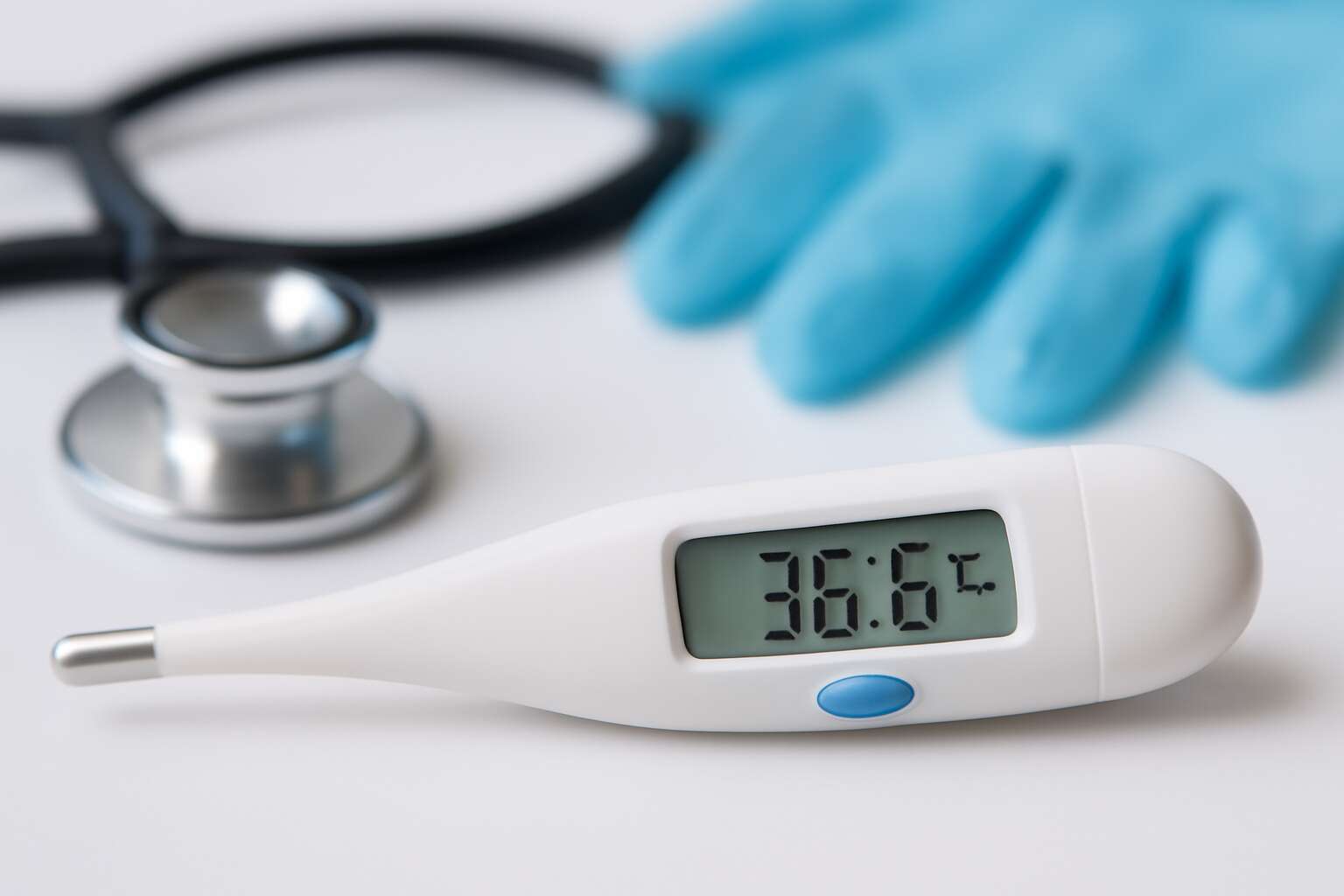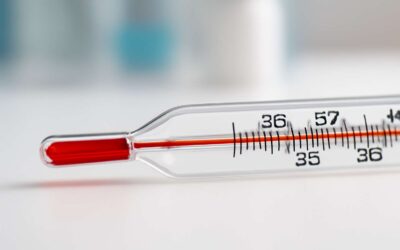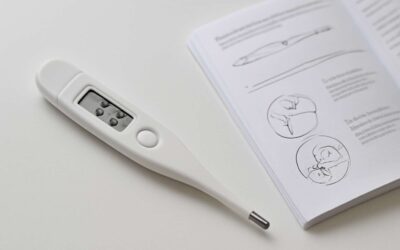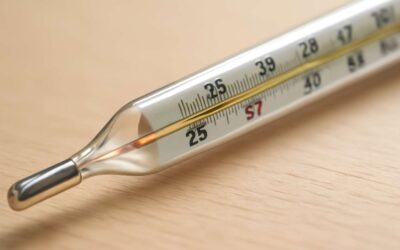Types of Thermometers and Their Uses
Digital Thermometers – How digital thermometers work and common applications
In a world where health and safety are paramount, understanding the different types of thermometers is essential. Among these, digital thermometers have become a household staple due to their accuracy and ease of use. Unlike traditional mercury or alcohol thermometers, digital thermometers are used to measure body temperature quickly, often within seconds, making them ideal for busy households or healthcare settings.
How do digital thermometers work? They utilize electronic sensors that detect temperature changes and convert them into a digital reading displayed on a screen. This technology not only provides precise measurements but also reduces the risk of breakage and mercury exposure. Their common applications extend beyond human health—digital thermometers are used to measure the temperature of food, liquids, or even environmental conditions, proving their versatility in everyday life.
In South Africa, digital thermometers are widely appreciated for their reliability, especially in rural clinics where quick and accurate readings are vital. Whether for checking a child’s fever or ensuring food safety, these devices continue to be indispensable tools in maintaining well-being. Their user-friendly design and rapid results make them a favorite among caregivers and professionals alike.
Mercury and Mercury-Free Thermometers – Historical context and safety considerations
Thermometers have a long history, and for many years, mercury thermometers were the gold standard in temperature measurement. These devices rely on the expansion of mercury within a glass tube to indicate temperature changes. However, concerns over safety have shifted the focus towards mercury-free alternatives. Mercury thermometers are no longer as popular due to their potential health hazards if broken, releasing toxic vapors into the environment. This shift underscores the importance of understanding the different types of thermometers are used to measure.
Mercury-free thermometers, such as digital and alcohol-based variants, offer safer and equally reliable options. They eliminate the risk of mercury exposure while maintaining accuracy. In many regions, including South Africa, these safer options are now standard in clinics and households. The transition from mercury thermometers highlights an ongoing commitment to health and environmental safety. Whether for medical use or food safety, knowing the distinctions between these thermometer types helps ensure proper and safe temperature measurement in everyday life.
Infrared Thermometers – Measuring surface and body temperature instantly
Infrared thermometers have revolutionized the way we measure surface and body temperature, offering an instant reading without contact. Unlike traditional thermometers that require physical contact, infrared devices detect heat emitted from the skin or objects, providing results within seconds. This rapid response makes them invaluable in busy healthcare settings and for quick temperature checks at home.
Their versatility extends beyond medical applications. Infrared thermometers are also used to measure the temperature of food, machinery, and even environmental surfaces, making them a multifaceted tool in various industries. For example, in South Africa, they are increasingly common in clinics and food establishments, ensuring safety and efficiency.
- Instant measurement of surface temperature
- Non-contact operation for hygiene and safety
- Suitable for both medical and industrial use
Understanding the different types of thermometers are used to measure is crucial for selecting the right device for each purpose. Infrared thermometers exemplify how technology continues to improve the accuracy and safety of temperature measurement, making them a staple in modern life.
Organic and Alcohol-Based Thermometers – Alternatives for specific environments
When it comes to selecting the right thermometer, understanding the diverse types available is essential. Organic and alcohol-based thermometers, for example, have stood the test of time, especially in environments where traditional mercury thermometers are no longer preferred. These alternatives are often used to measure temperature in settings that demand safety and environmental consciousness, such as food establishments and laboratories in South Africa. Their design typically involves a sealed glass tube filled with colored alcohol or organic liquids, which expand and rise to indicate temperature.
Not only are they safer than mercury thermometers, but their durability makes them suitable for various applications. For instance, alcohol-based thermometers are particularly effective for measuring temperatures in colder climates, where traditional mercury might freeze or be less responsive. Their versatility is a testament to how thermometer are used to measure in different industries—from culinary arts to scientific research—each requiring precise, reliable readings. Understanding these options enables professionals to choose the perfect tool tailored to their specific environment and safety standards.
Common Applications of Thermometers
Medical and Healthcare Use – Monitoring body temperature for health diagnostics
In the realm of health diagnostics, the precision of a thermometer is often underestimated—yet, it remains an indispensable instrument. As the body’s subtle signals shift, thermometers are used to measure core temperature, providing vital clues about underlying health conditions. In medical and healthcare settings across South Africa, these devices serve as silent sentinels, alerting clinicians to fever, hypothermia, or other anomalies that could signal impending crises.
Monitoring body temperature with thermometers is more than routine; it is a crucial act of insight. Whether through traditional methods or advanced digital tools, the ability to swiftly assess temperature can influence treatment decisions profoundly. The human body’s response to illness often manifests in changes in temperature, making this measurement a cornerstone of diagnostics. In many cases, the simple act of using a thermometer can mean the difference between early intervention and overlooked warning signs.
Home and Personal Care – Everyday temperature measurements for cooking, babies, and more
Everyday life pulses with moments where precision in measurement transforms routine into ritual. Thermometers are used to measure more than just health—they are silent witnesses to our daily tales of cooking, caring, and comfort. In the bustling kitchens of South Africa, they lend an unseen hand, ensuring that a roast reaches its perfect temperature or that the milk is warm enough for a child’s bottle. These simple yet vital tools embody a harmony between science and daily living, guiding us with unwavering fidelity.
From the gentle warmth needed in baking to the delicate care of a newborn, thermometers are used to measure temperatures with a quiet certainty that inspires confidence. For parents, a reliable thermometer becomes an essential ally, helping to safeguard their little ones’ wellbeing. For chefs, it’s the secret to culinary mastery, turning ordinary ingredients into extraordinary dishes. Whether through traditional or modern digital forms, these devices serve as guardians of safety and excellence in everyday moments.
- Measuring the temperature of liquids to achieve culinary perfection.
- Monitoring a baby’s body temperature with precision and care.
- Ensuring food safety by verifying cooking temperatures.
In a world where comfort and safety intertwine, thermometers are used to measure temperature with an artistry that blends technology and tradition. Their role in personal care, household safety, and culinary endeavors underscores their essential presence in South African homes. Truly, these humble devices shape the rhythm of daily life, one measurement at a time.
Industrial and Manufacturing – Temperature control in processes and quality assurance
In the intricate dance of industry and manufacturing, precision is not just a goal—it’s an obligation. Thermometers are used to measure critical temperatures that influence the quality and safety of countless products. From pharmaceuticals to food processing, maintaining exact temperature control ensures consistency and compliance with stringent standards. In fact, temperature fluctuations can compromise entire production lines, making reliable thermometers indispensable in safeguarding excellence.
In industrial settings, specialized thermometers monitor processes that demand unwavering accuracy. For instance, in chemical manufacturing, the precise temperature of reactions can determine the difference between success and catastrophic failure. Similarly, in the production of beverages or dairy, thermometers are used to measure the temperature of liquids, ensuring optimal fermentation or pasteurization. The role of thermometers extends beyond mere measurement; they serve as guardians of quality assurance and operational efficiency.
Whether through digital, infrared, or alcohol-based thermometers, these devices are woven into the fabric of modern industry. They enable engineers and quality controllers to fine-tune processes, prevent spoilage, and uphold safety standards. The right thermometer, employed with expertise, transforms complex procedures into seamless operations—proof that in industry, precision is the ultimate currency.
Environmental Monitoring – Measuring outdoor and indoor climate conditions
In the quiet moments of dawn or the relentless heat of midday, temperature shapes our environment in unseen yet profound ways. Thermometers are used to measure not just the ambient climate but the delicate balance that sustains life itself. From monitoring indoor air quality in South African homes to tracking outdoor weather patterns, these devices are essential tools in understanding and responding to our changing environment.
Environmental monitoring relies heavily on accurate temperature measurements. Whether assessing the microclimate of a conservation area or ensuring optimal conditions for urban agriculture, thermometers serve as the silent guardians of ecological stability. They enable us to detect subtle shifts that could herald larger environmental challenges.
In regions where climate variability is increasingly unpredictable, the role of thermometers in measuring outdoor and indoor climate conditions becomes even more critical. They help in making informed decisions—whether it’s adjusting HVAC systems or planning agricultural activities—highlighting the profound impact of precise temperature measurement in everyday life.
How Thermometers Are Used to Measure
Monitoring Body Temperature – Rectal, oral, axillary, and ear measurements
In the intricate dance of health and wellness, the role of thermometer are used to measure body temperature cannot be overstated. Whether in a bustling clinic or the comfort of a home, these devices serve as silent sentinels guarding our well-being. The most common methods—rectal, oral, axillary, and ear measurements—each have their unique advantages and subtle nuances that influence accuracy and comfort.
Rectal thermometers, often regarded as the most precise for infants and young children, are inserted gently into the rectum, providing core body temperature data. Oral thermometers, placed under the tongue, are favored for their ease of use and quick readings, making them ideal for adults and older children. Axillary measurements, taken under the armpit, offer a less invasive alternative, though they tend to be slightly less accurate. Ear thermometers, which detect infrared heat emitted from the eardrum, deliver rapid results and are particularly useful for on-the-go temperature monitoring.
Understanding how thermometer are used to measure body temperature across different contexts highlights their importance in daily life and healthcare. Each method provides vital insights into our health status, reminding us that technology—when used thoughtfully—becomes an extension of our own biological awareness. After all, monitoring body temperature is not just about numbers; it’s about listening to the subtle signals our bodies send us in moments of need.
Measuring Surface Temperatures – Infrared and contact thermometers for surfaces
In the realm of temperature assessment, the versatility of thermometers are used to measure extends far beyond human health. When it comes to surfaces—be it in industrial settings, culinary arts, or environmental monitoring—infrared and contact thermometers play a crucial role. Infrared thermometers are particularly valued for their ability to deliver instant readings without direct contact. By detecting the infrared heat emitted from surfaces, these devices enable quick, hygienic measurements, essential in food safety audits or electronics manufacturing.
Contact thermometers, on the other hand, require physical contact with the surface to gauge temperature. They are often used in situations demanding higher accuracy, such as calibrating machinery or assessing material properties. For example, thermocouples and thermistors are common contact thermometers that are integrated into systems for continuous monitoring.
- Infrared thermometers
- Contact thermometers
are both vital in their respective domains, each fulfilling specific needs for surface temperature measurement.
Checking liquids and substances – Thermometers in laboratories and culinary settings
In laboratories and culinary kitchens across South Africa, the precision of temperature measurement is paramount. Whether assessing the consistency of a delicate sauce or ensuring that a chemical reaction proceeds correctly, thermometer are used to measure liquids and substances with remarkable accuracy. These devices help maintain safety standards and quality control, making them indispensable tools in many professional settings.
For liquids such as soups, dairy, or laboratory reagents, specialized thermometers like digital or analog models are employed. They often feature fast response times, allowing chefs and scientists to verify temperatures swiftly without disrupting the process. In some instances, the choice of thermometer depends on the environment—alcohol-based thermometers are favored in environments where mercury use is restricted due to safety concerns.
- Check the temperature of brewing beer to achieve the perfect fermentation.
- Monitor the temperature of laboratory reagents to ensure accurate experimental results.
- Ensure food safety by verifying that cooked meats reach the required internal temperature.
In essence, thermometer are used to measure liquids and substances because they provide essential data that influences safety, effectiveness, and quality in a range of applications. From the bustling kitchens of Cape Town to high-tech labs in Johannesburg, these instruments are vital for achieving precision and consistency in every task.
Temperature Recording and Data Collection – Digital thermometers with memory functions
In the realm of temperature measurement, digital thermometers with memory functions stand as silent sentinels, capturing critical data with unwavering accuracy. These sophisticated devices are not merely tools for recording current temperatures; they are repositories of history, allowing users to trace temperature fluctuations over time. This capability is especially vital in environments where precision is paramount, such as laboratories, food safety monitoring, and industrial processes.
Thermometer are used to measure temperature with remarkable precision, often incorporating features like data logging and memory recall. By recording temperature data at specific intervals, users can analyze trends and identify anomalies that might otherwise go unnoticed. For instance, brewing beer requires meticulous temperature tracking during fermentation, while laboratory experiments demand exact conditions for valid results. Digital thermometers with memory functions simplify this process, making data collection seamless and reliable.
- Record temperature readings effortlessly with a push of a button.
- Store multiple measurements for future analysis.
- Retrieve historical data to monitor process stability over time.
This combination of instant measurement and data storage transforms the way professionals approach temperature management. Whether monitoring food safety in a South African kitchen or ensuring the integrity of chemicals in a lab, thermometer are used to measure temperature with a level of detail that was once unimaginable. The integration of memory functions elevates these instruments from simple devices to vital tools in maintaining safety, quality, and consistency across diverse applications.
Factors to Consider When Choosing a Thermometer
Accuracy and Precision – Choosing the right device for reliable results
When it comes to selecting thermometers used to measure, accuracy and precision are the twin pillars of reliability. A misread temperature isn’t just a trivial mistake—it can lead to misdiagnoses or faulty industrial processes. In South Africa’s diverse climate, choosing a thermometer that consistently delivers precise readings is essential. Whether you’re monitoring body temperature or controlling manufacturing conditions, the right device must align with your specific needs.
Factors such as calibration stability, response time, and environmental susceptibility play crucial roles in determining a thermometer’s accuracy. For instance, infrared thermometers are prized for instant surface measurements but can be thrown off by dust or sweat. Meanwhile, digital thermometers boast quick readings and digital memory, making them a favorite in healthcare and culinary settings. Remember, the best thermometer are used to measure with minimal error—so don’t skimp on quality or overlook calibration standards that ensure trustworthy results.
- Environmental conditions where the thermometer will be used
- Type of measurement required (surface, body, liquid)
- Frequency of use and need for data recording
- Ease of reading and user interface
Speed of Measurement – Instant readings versus longer processes
When it comes to choosing a thermometer are used to measure, speed can be a game-changer. In fast-paced environments like healthcare or industrial settings, instant readings are often non-negotiable. A delay of even a few seconds could mean the difference between catching a fever early or missing it altogether. Conversely, some applications tolerate longer measurement processes, especially when precision outweighs speed, such as in laboratory testing or calibration tasks.
For quick surface temperature checks, infrared thermometers are unrivaled—they provide instant readings without contact. However, if your work demands meticulous temperature monitoring—say, in a food processing plant or manufacturing line—you might prefer digital thermometers with longer response times but enhanced accuracy and data recording capabilities. Consider your environment and the criticality of timing, because choosing between rapid or thorough measurement methods can significantly impact your results.
Ease of Use and Maintenance – User-friendly features and cleaning requirements
When selecting a thermometer are used to measure, ease of use and maintenance often tip the scales more than you might think. A device that’s complicated to operate or demanding to clean can quickly turn into a chore rather than a helpful tool. In environments like busy clinics or industrial sites, where time is money, user-friendly features become essential—think large, clear displays and intuitive controls that don’t require a PhD to navigate.
Moreover, maintenance shouldn’t feel like a full-time job. Thermometers that are easy to disinfect—preferably with wipeable surfaces or removable components—save precious time and reduce cross-contamination risks. For instance, infrared thermometers are prized for their contactless nature, making hygiene effortless. Conversely, traditional digital thermometers with probe covers demand routine replacement, but their accuracy and durability often justify the extra effort. When choosing a thermometer, consider how simple it is to keep it in pristine condition, because a well-maintained device ensures consistent, reliable results without turning your workspace into a sanitation nightmare.
Safety and Hygiene – Material safety and infection control considerations
In the realm of precision and safety, the materials that compose a thermometer are not mere components—they are guardians of health and trust. When selecting a thermometer are used to measure, safety and hygiene must be woven into every fiber of the device’s design. The choice of body-safe materials such as medical-grade plastics and non-toxic, alcohol-based substances ensures that each measurement is not only accurate but also free from contamination risks.
In environments where cleanliness is paramount, the ease of disinfection can make or break the utility of a thermometer. Devices with wipeable surfaces, smooth contours, and removable parts stand resilient against the relentless tide of bacteria and viruses. For instance, infrared thermometers, prized for their contactless nature, exemplify hygiene efficiency, allowing users to measure temperature swiftly without physical contact. Conversely, traditional digital thermometers with probe covers demand routine replacement, but their robustness often compensates with unwavering accuracy.
- Material safety ensures that no harmful chemicals leach into the body during measurement.
- Infection control considerations dictate that the design facilitate effortless cleaning and sterilization.
- Durability and resistance to wear extend the lifespan, maintaining hygiene standards over time.
Ultimately, when choosing a thermometer are used to measure, prioritizing safety and hygiene is paramount, safeguarding both the integrity of the device and the well-being of its users. Every subtle detail—every material choice—echoes a commitment to health, precision, and peace of mind in every reading.
Benefits of Using Appropriate Thermometers
Health Monitoring – Early detection of illnesses and fever management
Every day, our bodies whisper secrets about our health, often revealing subtle signs before more obvious symptoms emerge. The importance of having the right thermometer are used to measure cannot be overstated, especially in a world eager for swift and accurate health insights. When a fever strikes unexpectedly, a reliable thermometer becomes an invaluable ally, guiding timely decisions and helping maintain well-being.
Choosing the appropriate thermometer ensures early detection of illnesses, which can be crucial in managing symptoms effectively. For instance, infrared thermometers provide instant readings, allowing healthcare practitioners and caregivers to swiftly assess a patient’s temperature without discomfort. This rapid response is vital in preventing the escalation of infectious diseases, especially in busy clinics or home settings. Moreover, the precision of digital thermometers offers peace of mind, giving users confidence in the data collected. Whether for routine health checks or urgent diagnostics, the right thermometer are used to measure with accuracy and speed, safeguarding health and fostering resilience in communities.
Cooking and Food Safety – Ensuring food is cooked to safe temperatures
In the realm of culinary mastery and food safety, precision is paramount. The use of appropriate thermometers are used to measure the internal temperature of food, ensuring that dishes are not only delicious but also safe for consumption. A high-quality thermometer acts as a silent guardian in the kitchen, revealing the hidden secrets of heat within a roast or stew. When meat reaches its ideal temperature, bacteria are eradicated, transforming a simple meal into a culinary triumph.
Choosing the right thermometer can be the difference between a perfectly cooked roast and a safety hazard. For instance, probe thermometers are invaluable for monitoring the internal temperature of large cuts of meat, while infrared thermometers allow quick surface temperature checks of cookware or baked goods. The key is to select a device that aligns with your specific needs, ensuring accurate readings every time. When thermometers are used to measure temperatures in food, they become the unsung heroes of every meal, safeguarding health and elevating cooking precision.
Industrial Safety – Preventing equipment overheating and hazards
In the bustling world of industrial safety, overlooking the importance of appropriate thermometers can lead to catastrophic equipment failures and safety hazards. Thermometers are used to measure not just comfort but critical operational parameters—preventing overheating, fires, and costly downtime. When machinery gets too hot, it’s like inviting chaos—melting components, compromised safety, and costly repairs. Ensuring equipment stays within safe temperature ranges isn’t just good practice; it’s a necessity.
Accurate temperature measurement allows for early detection of potential issues, saving both money and lives. For example, thermometers used to measure the temperature of electrical panels or industrial machinery provide real-time data that can prevent overheating before disaster strikes. These devices often feature robust designs, capable of withstanding harsh environments, and deliver precise readings essential for maintaining safety standards. When thermometers are used to measure equipment temperatures effectively, they act as the vigilant guardians of operational integrity—helping industries stay efficient and hazard-free.
Environmental Data Collection – Tracking climate changes and natural conditions
In the intricate dance of climate and natural phenomena, precise environmental data collection becomes an art form—an essential component in understanding our ever-changing world. Thermometers are used to measure not just human comfort, but vital indicators of climate shifts, weather patterns, and natural conditions. When the mercury rises or falls unexpectedly, it signals more than just temperature; it heralds profound environmental changes that require keen observation and timely response.
Harnessing the power of advanced thermometers allows scientists and environmentalists to track subtle temperature fluctuations with remarkable accuracy. This data informs climate models, guides conservation efforts, and enhances our ability to predict weather extremes. Whether monitoring outdoor air temperature or measuring the warmth of soil or water bodies, thermometers are indispensable tools in safeguarding our planet’s future. Their role in environmental monitoring is truly transformative, turning raw data into actionable insights that help us navigate the delicate balance of nature.




0 Comments